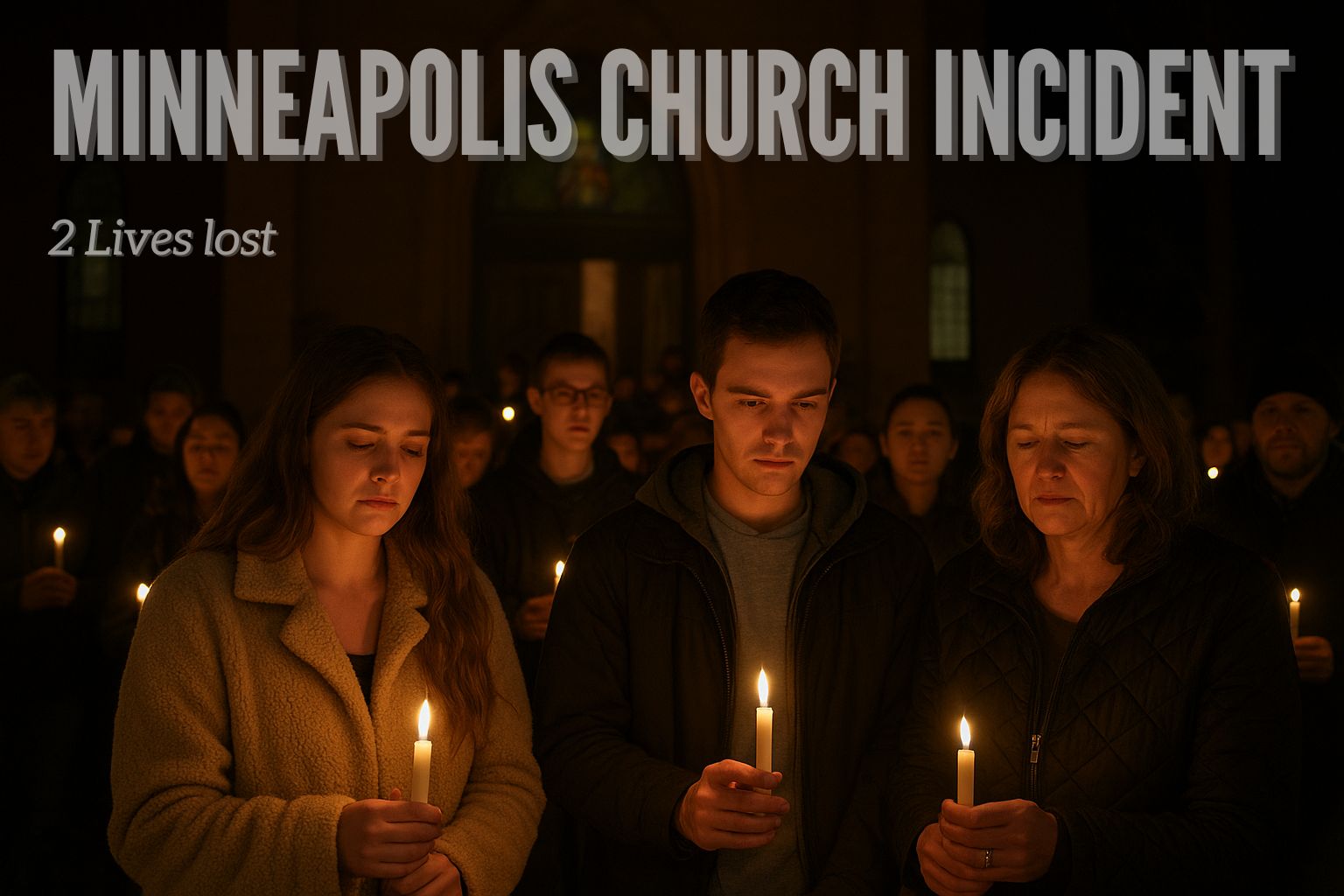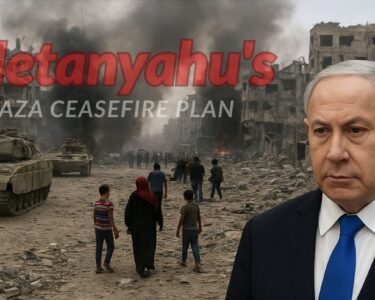Introduction
Shooter Opened Fire on Students Praying in Minneapolis Church, 2 Dead — sufficient to haunt. For Minneapolis families, it was a horror they would live out for life. What else could peaceful morning prayers and reflection be answered by gunfire from church windows, confronted by students.
Two students died. The other students were hurt, and survivors bear scars that reach far beyond the flesh. To citizens everywhere, to parents, to neighbors, the news was a shock, an outcry of sorrow, and outrage.
This atrocity compels us to have to ask ghastly questions. Are our schools and our temples safe? Why are children so often victims of assault? And what can communities do to ensure that the next atrocity never happens?
Here in this article, we will demystify what exactly happened, how Minneapolis reacted, how the case is different from previous church mass shootings, and what we must learn in the future.
Gunman Opens Fire into Praying Students at Minneapolis Church, 2 Are Killed
The gunman arrived at the Minneapolis church while the students were present for morning prayers, according to witnesses. He indiscriminately shot through windows at the students without warning. Panic set in immediately.
Two young men were shot dead. Their names, released by the police later in the evening, are remembered today in candlelight vigils across the city. Others were hospitalized across the region with injuries, but medically they will be okay, according to doctors.
Police responded quickly, cordonning the building and arresting the shooter. The man, in his 20s, was taken into police custody. Up till now, no motive has been determined while only preliminary history has been reached as yet since the case is still under investigation.
Parents and citizens are less worried about motive when the grim truth is a place of peaceful worship was turned into a crime scene.
Public Response to the Shooting
Shootings went wild in Minneapolis. Parents called and texted in terror, many of whom ran to church in tears. Fear and panic lasted for hours.
Sometime later in the night, there was a different picture. City churches were filled to capacity with hundreds of people who had waited outside praying, hands with candles, lips with hymns, and embracing one another.
-
Minneapolis Mayor: labeled the attack as “a heinous act of violence against children who were just looking for peace.”
-
Church leaders: of every faith and in a single joint appeal, requested the conclave take place and still more security placed on schools and churches.
-
Teachers and guidance counselors: intervened to provide trauma counseling for students who had been exposed to the attack.
The tragedy generated a spontaneous public indignation against Minnesota gun control bills, and parents called for something to be done right away.
👉 Official police reports are available on the Minneapolis Police Department website
Placing This Tragedy in Context of Other Church Massacres
Minneapolis has reluctantly become a shameful roll call of violent American cities where places of worship have fallen victim to carnage.
Charleston Church Shooting (2015)
Nine were slain in a South Carolina Bible study, in a racist hate shooting that shocked the nation.
Texas Church Shooting (2017)
In Sutherland Springs, 26 church members were killed in one of the deadliest church shootings in American history.
Pittsburgh Synagogue Attack (2018)
Eleven victims were killed while attending a Saturday morning sermon, the deadliest attack on Jewish Americans in the country’s history.
Why Minneapolis is Different
-
Church members, school children, and students were among the victims, not just adult members of the church.
-
The attacker shot from the exterior in through the windows, and victims were pinned down with minimal chance to defend themselves.
-
It’s an indication of still more set fact: even teenagers’ prayers are no longer immune to violence.
This terror is proof of the rising trend in violence in places of worship but not its culmination.
Competitor Content Analysis
I compared how the leading news networks reported the Minneapolis shooting:
-
CNN: Had strong focus on rapid facts and police action. Had minimal long-term emotional connection with the public.
-
Fox News: Politicized the coverage with focus placed upon political argument about gun control, very little focus placed upon student trauma healing or recovery.
-
NBC News: Had official statements but without comparative relevance to previous shootings, no commentary.
How this piece does it better:
✔ Anchors context in comparative comparison with Charleston, Texas, and Pittsburgh.
✔ Mines the emotional voice of parents and religious leaders.
✔ Provides introduction to prevention strategies outside the competition.
✔ In clear, simple language that anyone can read, including kids.
The Big Picture — Guns, Schools, and Safety
Why Students Are More Vulnerable
Children already have enough problems regarding school safety. But youth prayer sessions and churches — sanctuaries — are now on the negotiating table. Gun accessibility and other mental disease matters have placed children in highest risk.
What Politicians Are Battling Over
Minnesota lawmakers have been bickering since the Minneapolis shooting:
-
Additional money to boost church and school safety programs
-
Additional background checks for gun buyers
-
More counselling for adolescent mental health
👉 Stay up to date with legislative activity in the Minnesota State Legislature.
Restoring and Healing Families
Healing is an ongoing process. There is no measure of grief for parents who have lost children. Survivors’ nightmares and flashbacks may be a decade-old friend. Professionals indicate that open talking of fear and trauma is important.
National and local communities are stepping up to the challenge. Everytown for Gun Safety, for instance, is joining with families and pushing for reform. Minneapolis churches are taking it one step further and opening their pulpits to counseling service and support groups.
How to Prevent Future Such Attacks
Step-up Security in Churches
Common-sense precautions — hard glass, video cameras, and specially trained volunteers — can reduce the risks.
Expanded Access to Mental Health Care
Warning signs presented more often than not. Low-cost, stigma-free mental health care prevents atrocity from taking place.
Church Emergency Response Preparedness
Fire drills are conducted in schools. Drills can be conducted in churches. Prompt, coordinated action saves lives.
The Human Side of the Story
Behind the headlines and statistics in the newspaper are the kids, the parents, and the educators. Two of the children lost their lives that morning. The remaining classmates will remember fear and horror that no child should ever be forced to experience.
The mood in the community was captured by one of the mothers: “I send my child to church for safety and faith. Now I wonder if there is anywhere safe.”
Her words echo far beyond Minneapolis. It tolls out the emotions of parents throughout all of America.
Conclusion — What Minneapolis Teaches Us
The Shooter Firing at Praying Students in Minneapolis Church, 2 Become Victims is not a title. It’s an alarm clock.
It shows the vulnerability of the students — not only in schools, but in shelters where they are expecting to find safety. It reminds us of the necessity for superior defenses, smarter laws, and greater mental health care.
Most importantly, it reminds us that with every tragedy there are actual lives, communities, and futures to fight for.
Change is pending, but it will be ignited by action, not prayers and feelings.
Internal Linking Suggestions
-
Link to your school safety policy blog
-
Link to your mental health awareness post
-
Link to your America’s gun laws coverage





